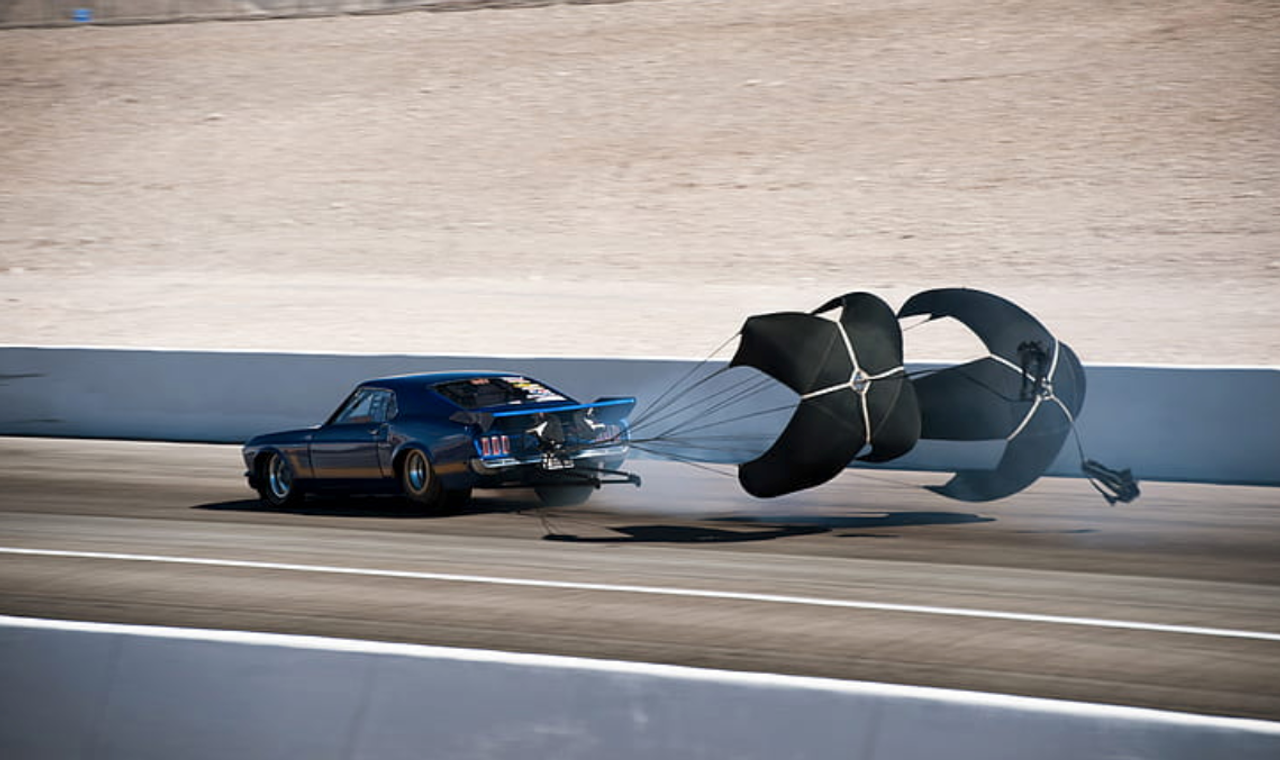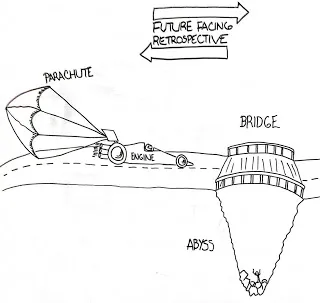
The Speed Car – Abyss retrospective is a forward-thinking exercise, created by Paulo Caroli. It is a mix of retrospective and futurespective, which will help your team uncover risks. It’s a popular retro template for Scrum Masters and Agile teams that want to find an axis of improvement. The Speed Car retro is an easy exercise to spice up your meetings and discover a new angle of analyzing your processes.
This retrospective format can fit into a 40-minute time frame, which is a great incentive for your team to be more active and keep their focus throughout the whole activity. The session has four main steps: looking back, looking forward, discussing, and dot voting.
Each of them should take up to 10 minutes. You will need sticky notes, a board, pens and a positive attitude to hit the ground running and make sure you stay within the timebox.
Begin drawing illustrating the speed car and the abyss on a whiteboard or canvas, so that your team can follow along. It’s OK if you’re not an artist, a basic frame like the example below will do just fine.

To set the stage, the Scrum Master or Team Lead facilitating, goes over each of the areas of the retro to explain their meaning. They will introduce:
Each participant is armed with a pack of sticky notes (each person gets their own color) and asked document their ideas, one per post-it in the following order:
Team members place their sticky notes around the two areas on the left-most side of the board: the engine and parachute of the speed car considering questions such as: *What has been pushing us forward? *and What was making us move faster? to account for circumstances which were acting as an engine for the team.
What has been slowing us down?, to refer to situations that acted as a parachute for a speed car.
After looking back, ask participants to share their ideas, thinking about the future and focusing on the dangerous abyss and promising bridge on the right-most side of the retrospective template.
Ask team members to explore the following questions: What are the dangers ahead?, *What could take us off the road? *to populate the abyss area of the template. Populate the area of the bridge in this template by asking team members to consider the question: What could we do to overcome such challenges and escape the abyss?
Group similar ideas in each category into clusters and use the dot voting technique to decide which topics will be discussed and in what order.
To dot vote, participants place a dot on any idea they agree with and would like to discuss. Each person has 3 to 5 dots to distribute across the topics they are interested in. They can place their votes on the same note if they’re really passionate about a particular issue and they want to make it part of the discussion.
After dot votes have been counted, it’s time for the thorniest part of the speed car – abyss retrospective: discussion!
The conversations the team will have now are not only about fixing things that went wrong in the sprint but also about preparing for what’s ahead.
This is the ultimate value of the Speed Car – Abyss Retrospective. It helps you look at both the past and the future and helps you identify the axis of improvement that is most appropriate for your team.
Start with the topics that have the most votes from the parachute and engine areas to complete the retrospective and then proceed with the abyss and bridge areas to wrap it up with the futurespective.
When the team has achieved consensus about several naturally-occurring action items related to the topics that were raised, the last step is to actually make that improvement happen.
Collect the action items that the team arrived at by the end of the retrospective and transform them into actionable items in your next sprint, allocating capacity to pushing them forward just as you would any other work item.
This retro template is different from the other formats you’ve used because it’s a format that effectively looks back and ahead at the team process, helping you anticipate risks.
This different approach will surely bring fresh excitement into your team’s retrospective meeting.